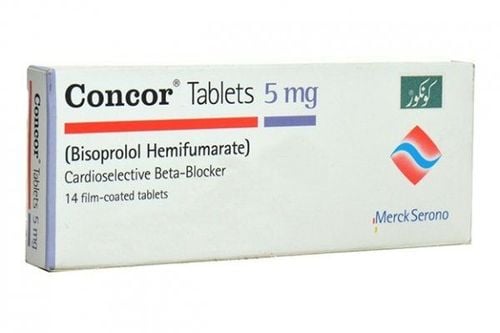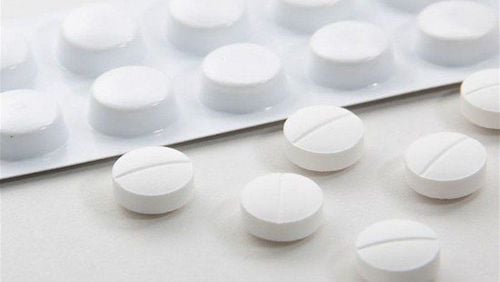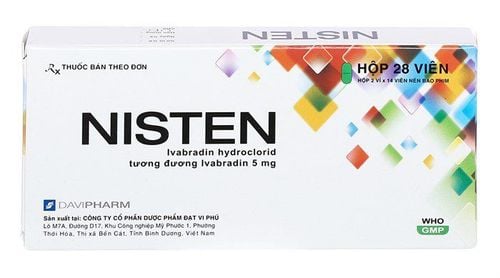This is an automatically translated article.
Posted by Doctor, Doctor Nguyen Hong Son - Department of Examination - Vinmec International General HospitalCardiovascular disease is a dangerous disease and accounts for a high mortality rate, especially the frequency of cardiovascular diseases is increasingly younger due to unhealthy habits in daily life. Therefore, taking measures to prevent cardiovascular disease is an urgent task today.
1. What is prevention of cardiovascular disease?
Clear evidence shows that good control of blood pressure, diabetes, improvement of dyslipidemia, smoking cessation and lifestyle changes reduce the risk of first or recurrent heart attack, while also reducing the risk myocardial infarction. Cardiovascular disease prevention refers to measures applied to the treatment of cardiovascular risk factors that contribute to preventing, delaying or modifying the development of clinical atherosclerotic disease (primary prevention) as well as as the treatment of people who already have coronary artery disease (secondary prevention). Current recommendations for cardiovascular disease prevention are based on guidelines from the Vietnam Heart Association and the American Heart Association.

Bệnh nhân tim mạch từ bỏ thuốc lá sẽ giúp giảm nguy cơ đột quỵ tim
2. How are lipid metabolism disorders associated with cardiovascular disease?
A strong, independent and persistent association has been established between cardiovascular disease and levels of LDL cholesterol or total cholesterol. Many studies have shown that when taking lipid-lowering drugs with statins, there was a significant 13% reduction in total cardiovascular mortality for every 10% reduction in total cholesterol.
Although the beneficial effects have been proven, the rate of cholesterol treatment reaching the target even among patients with cardiovascular disease in Vietnam as well as in the world is still very low.
3. Is there a link between HDL-C and cardiovascular disease?
Studies have demonstrated that HDL-C is an independent risk factor for cardiovascular disease. There is an inverse association between HDL-C levels and cardiovascular risk.
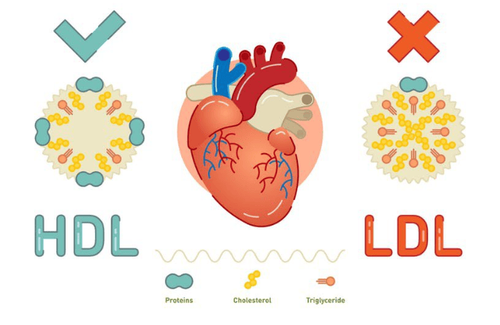
Yếu tố HDL-C có mối liên hệ với bệnh tim mạch
4. Are triglycerides an independent risk factor for cardiovascular disease?
Yes, a strong independent association exists between triglyceride levels and cardiovascular disease, especially in female or elderly patients with insulin resistance and metabolic syndrome. The rate of cardiovascular events was 2-fold increased in patients with triglycerides ≥ 200 mg/dl compared with patients with normal triglyceride levels. There is still controversy around whether elevated triglycerides directly affect the formation and stability of plaque. Elevated triglyceride levels are an indicator of other comorbidities that contribute to the development of atherosclerosis.
5. What is the concept of prehypertension and hypertension?
Optimal blood pressure is < 120/80 mmHg. Prehypertension is when the systolic blood pressure is 120-139 mmHg, and the diastolic blood pressure is 80-89 mmHg. Stage I hypertension is when blood pressure is ≥ 140/90 mmHg.
6. Should lifestyle changes be recommended in patients with prehypertension and hypertension?
Have. Lifestyle changes in people with pre-hypertension and hypertension include: decreased Na, increased K (not in patients with renal failure), high-fiber meals, decreased Na intake < 2.3 g/day; three daily servings of fat-free or low-fat milk; Daily exercise, weight loss, smoking cessation, stress reduction and alcohol reduction, for female folate supplementation. Control blood pressure well with patients on blood pressure treatment.

Giảm cân là một trong những phương pháp có lợi cho việc điều trị bệnh tiền tăng huyết áp và tăng huyết áp
7. What measures are effective to prevent diabetes complications?
Controlling blood sugar through diet, weight loss, exercise and proper medication regimen are the key points of preventing diabetes complications. Current recommendations use a target HbA1c <7% as acceptable for non-pregnant adults. However, doctors may recommend a lower target HbA1c < 6.5% for some patients if it does not cause severe hypoglycemia or other side effects. Appropriate cases include short duration of diabetes, type 2 diabetes treated with lifestyle changes or metformin alone, young patients, or no significant cardiovascular complications. HbA1c <8% for patients with a history of severe hypoglycemia, elderly age, severe macrovascular or microvascular complications, long history of diabetes, and difficult glycemic control goals performed despite patient education and multiple drug classes and even the use of injectable insulin.
8. What are the harmful effects of tobacco on the heart?
Smoking increases the risk of death from cardiovascular disease and a 10-fold increase in cardiovascular death in men (4.5 times in women) compared with non-smokers. Cardiovascular risk is related to age of smoking initiation, amount of smoke inhaled, duration and quantity smoked. Cardiovascular risk is doubled when smoking 1-4 cigarettes/day. Patients with cardiovascular disease who continued to smoke had a lower quality of life and activity, more chest pain, more hospitalizations, and higher rates of mortality after acute coronary syndromes.
The tobacco environment increases the risk of cardiovascular disease in non-smokers. Smoking cessation and avoidance of secondhand smoke exposure are important to prevent cardiovascular complications.

Hút thuốc lá làm tăng nguy cơ mắc bệnh tim mạch
9. Is a sedentary lifestyle a risk factor for cardiovascular disease?
A sedentary lifestyle is a primary, modifiable cardiovascular risk factor for cardiovascular disease, and exercise inhibits the development and progression of cardiovascular disease. Regular exercise improves weight, glycemic control, dyslipidemia and hypertension, and reduces cardiovascular mortality.
Not exercising regularly has the same cardiovascular risk as smoking. Regular exercise reduces all-cause and cardiovascular mortality by 20% to 25%.
10. What is obesity? Is obesity a cardiovascular risk factor?
Obesity is a chronic state of body weight gain due to excessive and abnormal fat mass gain, in relation to nutrition and metabolism. The socio-economic development has changed the diet, many processed fast foods, combined with a sedentary lifestyle, leading to an increase in obesity at an alarming rate in the country. Vietnam as well as developing countries.
Obesity is a risk of many non-communicable diseases such as diabetes, dyslipidemia, atherosclerosis, hypertension, osteoarthritis, cancer...

Những người béo phì có nguy cơ mắc nhiều bệnh lý nguy hiểm, trong đó có bệnh tim mạch
Obesity is assessed by many methods, in which the BMI (Body Mass Index) formula is simple, easy to use and internationally recognized:
BMI = Weight (kg) /[Height (m)]2
To match the characteristics of Asian countries, from the actual research in countries, the standards issued in 2000 were taken as follows:
Table 1. Classification criteria obesity promulgated in 2000
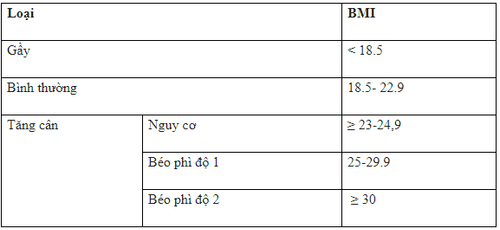
Table 2. Assessment of obesity according to the World Health Organization.
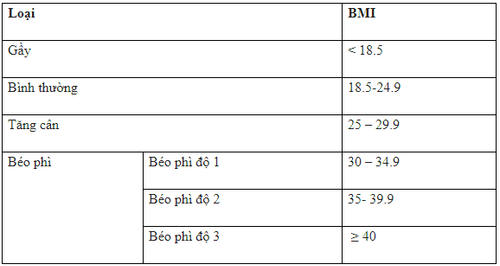
The first indication is a weight loss diet, combined with increased exercise - physical exercise to increase energy consumption. If the goal is not achieved, prescribe drugs and other interventions. The goal of treatment is to lose weight, reduce 5-10% of the initial weight, also improve the complications of obesity such as dyslipidemia, diabetes, hypertension...
Limit energy for about 20- 25 kcal/kg/day. Applying a strict diet to lose weight in terms of energy supply depends on age, physical activity and weight loss goals.
The diet has a balance between glucid, lipid and protid. Avoid using a lot of glucid (energy from glucide provides about 50% of the energy of the meal, lipid about 30% and protid about 20%), limit simple sugar, saturated fat.
Cardiovascular disease is a dangerous disease, so prevention is very important. There are many ways to prevent cardiovascular disease such as making healthy lifestyle changes, maintaining proper nutrition and getting regular health checkups. If there are high risk factors, it is necessary to monitor and screen for cardiovascular disease early.
To protect heart health in general and detect early signs of cardiovascular disease, customers can sign up for Cardiovascular Screening Package - Basic Cardiovascular Examination of Vinmec International General Hospital. The examination package helps to detect cardiovascular problems at the earliest through tests and modern imaging methods. The package is for all ages, genders and is especially essential for people with risk factors for cardiovascular disease.
Please dial HOTLINE for more information or register for an appointment HERE. Download MyVinmec app to make appointments faster and to manage your bookings easily.
References
American Heart Association Scientific Statements and Practice Guidelines: http://www.americanheart.org/presenter.jhtml?identifier=9181 National Center for Health Statistics, Center for Disease Control and Prevention: Compressed mortality file: underlying cause of death 1979 -2004. Available at http://wonder.cdc.gov/mortSQL.html, accessed january 15, 2008. Smith SC Jr, Clark LT, Cooper RS, et al: Discovering the full spectrum of cardiovascular disease: Miority Health Summit 2003; report of the Obesity, Metabolic Syndrome, and Hypertention Writing Group, Circulation 111 (10); 2 134-139.




